When you purchase through links on our website, we may earn a commission. Affiliate disclosure.
The electric bike can be considered either a tool for getting you from A to B, or a gateway to a fitter healthier you. I often get asked if I can get fit riding an e-bike, and I always say, it depends on how much effort you’re willing to put in.
If you ride everywhere in full power mode, letting the bike do all the work, you’ll make slow progress. But, if you incrementally increase your workload you will see your fitness improve. For me, discovering the e-bike was life-changing, and helped me transform from being overweight and unfit, to the much healthier and more active person I am today.
There are an increasing number of people who are turning to electric bikes as a primary way to increase fitness. Using an electric bike to get fit has become so popular, there have been extensive scientific studies on the subject of fitness and e-bikes.
One thing you do need to remember though is, if you’re getting back into cycling, whether using an e-bike or not, it is always wise to consult your doctor. Particularly if you have an existing health condition.
In this article, I will be exploring the health benefits of riding a pedelec, this means the electric assist can only be activated by pedalling (and not throttle).
To get fitter you will need to be pedalling, as the very act of pedalling will help to increase your cardiovascular fitness. What an e-bike motor does is simply reduce the intensity of the pedalling, so you are putting less strain on your heart and joints.
Health Benefits of Riding an Electric Bike
Riding an electric bike can have a lot of the same health benefits as riding a regular bike but with reduced intensity.
- Improved mental well-being
- Better circulation
- Lowered Blood pressure
- Reduced risk of type ll diabetes and improvement in those who already have the condition.
- Improved cardiovascular health
- Stronger immune system
- Improved lung function
- Lower BMI
All of the above health benefits can be achieved by riding an electric bike regularly at a moderate intensity. It’s worth remembering that to feel the full benefits, you may need to make some lifestyle changes. Including changing your diet, reducing alcohol intake and stopping smoking.
The Smart e-bikes project is a long-term research project being carried out by Brighton University and covers everything from fitness to the environmental benefits of using an electric bike.
Understanding e-bike pedal assist
To understand how electric pedal assist works, we’ll start by looking at the two main types of pedal sensing systems currently employed on e-bikes.
Cadence Pedal Assist Sensor
This type of pedal sensor is commonly found on budget e-bikes and measures pedal rotation. The more basic systems act very much like an on/off switch, meaning that as soon as you start rotating the pedals the motor kicks in.
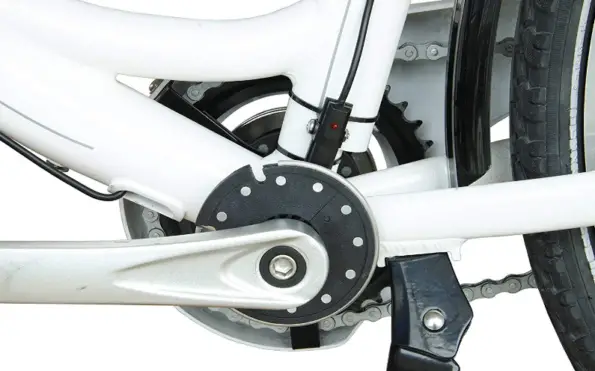
On the older cadence pedal-sensing systems as soon as the pedals were rotated the motor would just kick in quite suddenly. Thankfully, the latest developments in controller software mean what usually happens is, the sensor measures each pulse from a magnetic ring positioned on the bicycle’s crank and the controller feeds in assistance from the motor gradually with each rotation of the pedal crank. Providing a smooth uptake of power.
Cadence-based systems are fine, but they do not provide the kind of intuitive levels of assistance found in torque sensing systems.
What is Ghost pedalling?
Ghost pedalling is where you are just spinning the pedals but not exerting any discernible force. You cannot ghost pedal a torque-sensing motor as it relies on the force being applied to the pedals, but you can ghost pedal a cadence system. The benefit here is if you do find yourself tiring, you can select a low gear and just spin the pedals at a leisurely pace without exerting yourself.
Torque Sensing Pedal Assist
Torque sensors have been around for a few years now, and the technology has been refined to such a point that when you ride an e-bike with this kind of sensor, you feel like you have developed superhuman strength in your legs!

What a torque sensor does is measure the amount of force you are applying to the pedals, and as this force is constantly changing, you are always getting just the right amount of assistance for your needs.
Most modern torque sensing systems also incorporate a cadence sensor and speed sensor to further refine the pedalling experience.
Torque Sensor vs Cadence Sensor
I think that the old argument about using a torque sensor vs a cadence sensor boils down to your personal preferences.
From a fitness perspective, a torque sensor is going to give you a much smoother, and natural pedal assist. A torque sensor will take your effort and effectively amplify it. This can be a great confidence booster when you are just starting.
Another benefit of the torque sensor is increased motor efficiency, meaning you will always get a greater battery range as the motor will only ever be assisting the rider when needed.
Cadence pedal sensors also have their plus points. The main one is the instant nature of the assist. This can be especially helpful if you have knee problems which limit how much force you can apply.
Best Type of Electric Bike to Get Fit
Electric bikes cover all disciplines from road bikes through to mountain bikes and gravel bikes. The most popular type of e-bike is the hybrid as this is a compromise between a mountain and a road bike. You can even buy e-bikes that are specifically marketed as fitness electric bikes.
The type of bike you get will depend on the kind of terrain you’ll be riding on. If it’s mainly tarmac, then you would be better off with a hybrid or road bike. If you are planning on riding mainly off-road then a decent electric mountain bike would be your best bet.
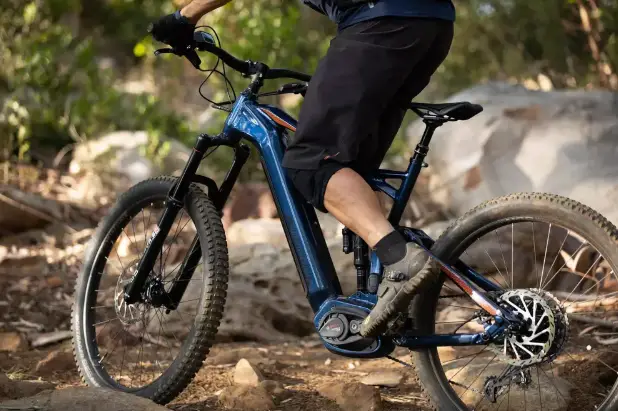
If you live in a very hilly area, you would be much better off with a mid-drive motor. For gently undulating terrain a rear hub motor will do the job well enough.
Another big deciding factor will be your budget. Thankfully, there are quite a few decent e-bikes around now in the sub-£1000 price bracket. Ultimately you want something that is going to be comfortable, and reliable in the long term. You can go for the self-build option as I did, but this should only be attempted if you are confident in your abilities and you have the right tools.
E-Bike Power Output about Fitness Training
When it comes to getting fit, if you’re riding an electric bike that produces too much power, it can minimise the health benefits. If you have a lot of power on tap, It’s always tempting to let the motor do all the work, when you need the motor to be sharing the workload equally.
Most countries have e-bike laws governing the maximum amount of power an electric bike can produce before it’s considered a moped.
In the UK, EU and Australia that limit is currently 250 watts of continuous power – equivalent to one-third of a horsepower. The maximum assisted speed is also limited by law to 15.5mph (25 km/h). Once you exceed this speed the motor ceases to assist. There is a buffer zone, and some factory e-bikes I have ridden give assist to about 17 mph.

The maximum power output is also flexible. Most 250-watt e-bikes can produce short bursts of power up to around 400 watts. In the US you can ride an e-bike that produces up to 750w of power and a 20 mph top speed.
The main problem with the 250w limit (as I see it) is we all have different abilities and if you’re severely overweight and live in a very hilly area, this amount of power may not be enough to provide any meaningful help.
I can appreciate this predicament as when I first started riding an e-bike, I was over 280 lbs in weight. I initially used a 500w hub motor e-bike, and even then I struggled with some of the hills where I live.
When I eventually made the transition to a mid-drive, I went for a 750w motor as it allowed me to fine-tune the assist I needed. On the flat, I would be using no more than 100W, and I would incrementally increase that power depending on the steepness of the hill I encountered (bearing in mind there are a few 15-20% hills in my area). Around the same time, I tried a 250w motor and found it just didn’t cut the mustard.
Fast forward 4 years, and I now only ride e-bikes to test and review them. I stopped riding an electric bike regularly in August 2017 and since then I’ve covered over 10,000 miles on a regular road bike. If I now ride a 250w e-bike it feels very quick to me. So I can see things from both sides of the fence.
Can Riding an Electric Bike Help You Lose Weight?
Firstly, if you’re overweight (like I was), riding an electric bike on its own isn’t going to be enough to help you lose a substantial amount of weight. You’re going to need to make changes to your dietary intake. My Achilles heel was a diet high in empty calories, particularly alcohol, sugary drinks, pizza and fast food.
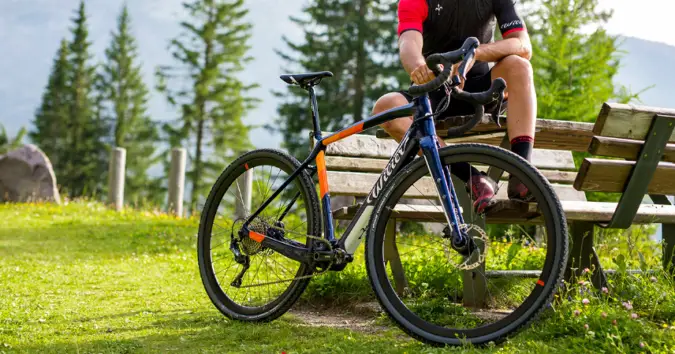
I’m not an expert on dieting, but the way I see it is it’s just a case of using common sense. Sugar is the main enemy, cut it out as much as you possibly can and avoid starchy foods. Try and eat more green vegetables, protein and foods that are rich in good fats. Certain carb-rich foods like porridge are beneficial as they provide good-quality fuel, that your body can convert into energy.
Riding a pedelec requires the pedals to be turned for the motor to activate. This means, even if you just go on a nice and easy ride without any big hills, the very fact that you are spinning the pedals will help you burn calories. For more information check out my 5 tips to lose weight riding an electric bike.
Starting – Your First E-Bike Ride
When it comes to riding, firstly you need to make sure your bike is set up correctly for you. If this means going to your local bike shop for a bike fit, it will pay dividends in the future. Riding a bad set-up bike will affect your pedalling efficiency, and may even have a detrimental effect on your knees and back.
If you are riding an e-bike for the first time, it would be worth spending a little time familiarising yourself with the gears and the electric assist functions.
How many calories you burn will relate to how much work you put in. If you ride everywhere in full-power mode, then the electric motor will be doing most of the work. What you need to do is establish a balance, where you and the electric motor are sharing the workload equally. This will depend on your physical ability and current state of health.

The main thing to remember is don’t push yourself too hard when you first start. Take it easy and progress from there.
Start off riding small, manageable distances and ride using an assist level you are comfortable with. Consistency is the key when cycling for fitness and weight loss. You will be far better off doing short regular rides, than going off and attempting 50 miles. I would aim for 10 miles a day 3 to 5 days a week.
Once you get your confidence up, you can start increasing your mileage. After a few weeks of regular riding, you should notice things getting easier. This might be the time to try cycling with less assist, and maybe upping the intensity a little.
If you’re riding an electric bike with the specific aim of getting fitter and losing weight, there will come a stage when you will need to start stepping outside of your comfort zone. I’ve been there myself and it wasn’t until I started to push myself that I saw results.
My perspective
I remember when I first discovered e-bikes back in the summer of 2016. For me, it was a life-changing moment and I had no idea where my new-found love of cycling would lead me.
At the age of 47, I desperately wanted to get back into cycling, but I had spent most of my adult life as a heavy drinker and smoker. I also had an appalling diet and the last time I cycled regularly was in my early 30s.
Apart from my health, the main barrier I faced was the very hilly countryside where I live. There are steep hills in every direction, and on an average ride, you would be guaranteed to climb at least 100ft for every mile ridden.

Because I was so overweight and unfit, every time I took my trusty old Saracen mountain bike out for a spin, I would get about 2 or 3 miles and inevitably give up and come back home.
I found it very difficult to keep myself motivated enough to cycle regularly. There was the odd time I would manage to go out a couple of times a week, but I just struggled. Every time I pushed myself I would be gasping for air and I could feel my heart pounding, like it was trying to jump out of my chest.
At this stage, I had already managed to give up smoking and drastically change my diet, but the years of self-neglect were still evident in my general fitness and weight.
It was around this time I was speaking with a friend who asked me if I’d tried an electric bike. To be honest, I had heard about electric bikes, but never really gave it any thought. So I decided to go out and buy a cheap, rear hub motor-powered hybrid bike.
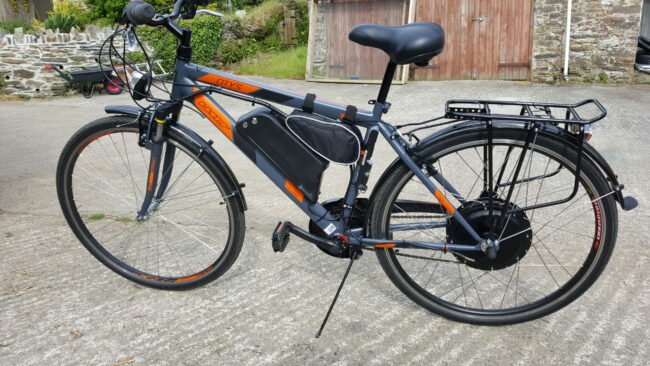
At the time, I didn’t know a lot about electric bikes, and I made an uninformed, impulsive purchase. The bike in question (pictured above) was a £125 hybrid bike with a rear hub conversion kit fitted.
Despite its crude nature, I was immediately impressed with the amount of pedal assist available and started to go cycling daily – any excuse I could find for going out, I would go. Need to go to the shop… take the bike, need to post a letter… take the bike, got go to the bank… take the bike. You get the picture!
Then one day I ran out of battery about 4 miles from home, with a couple of steep climbs to go. This thing was an absolute pig to pedal without any assistance, and I found myself having to walk the steeper hills.
I quickly decided I needed a lighter bike with a rigid frame and mid-drive motor, this was my first Bafang mid-drive conversion.

This bike was a game-changer, and even though it was still fairly heavy with the motor and battery fitted, you had 9 levels of assistance to choose from so I could fine-tune the amount of assistance I needed.
What I did overtime was set myself goals of incrementally reducing the amount of assist I was using for certain hills until such a time as I could just about get up them with the assist switched off.
Another thing I noticed was as the months went by, the weight started to come off. At this stage, I was cycling between 50-80 miles a week, sometimes more.
By the summer of 2017, I was ready to take the plunge, and I brought myself a cheap used road bike for £100. The crazy thing is, I was expecting to find riding it for any distance a bit of a struggle at first but to tell you the truth it was a fairly painless transition – I think it was helped by the fact the road bike only weighed about 10kg vs 20kg for the e-bike.
Fast forward to January 2023 and I have covered over 25000 miles without electric assistance, including several 120-mile+ rides. At 53 years of age, I’m the fittest I’ve ever been!
My blood pressure has reduced significantly, and I have dropped 6 inches in waist size (from 42″ to 36″). Another remarkable improvement has been my mental health and general well-being. When I was unhealthy for all those years, I suffered bouts of depression and anxiety – this has all but gone.

The big question is, could I have achieved this without an electric bike? A lot of people would say I should have just gotten off my backside and rode a normal bike. But that’s a lot easier said than done when you’re incredibly unfit and suffering from depression.
I had a massive challenge in front of me and e-bikes were the bridge that help me get across the psychological barriers I had put in place. That sense of freedom and enthusiasm I experienced when I first started riding an electric bike reminded me of how I felt when I first started to ride as a child.
Conclusion
You can get fit by riding an electric bike, you just need to be consistent and push the boundaries. E-bikes aren’t a quick fix, once you start riding one you’ll need to keep on riding. And if there comes a time you feel confident enough to ‘go it alone’ and start riding a good old-fashioned regular bike again, make sure you take it easy to start with.
Riding an e-bike can be an incredibly liberating experience. They allow riders of all ages abilities to get back on two wheels without having to worry about hills. You can explore the countryside, use one for commuting or just get around from A to B.
Another interesting side-effect of e-bike riding is you will feel better about yourself. There’s nothing like immersing yourself in the sights and sounds of the countryside to lift your spirits.
If you’re thinking about taking the plunge and buying an electric bike, I can’t recommend one highly enough. If you need any advice about what to purchase, please comment below and I will usually get back with a reply in 24hrs. Thanks for reading and happy riding!

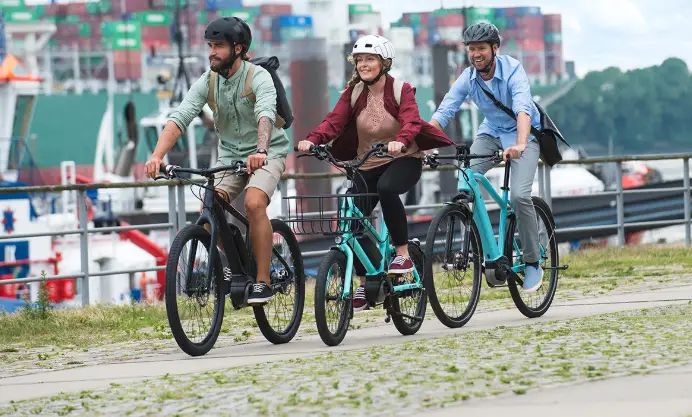
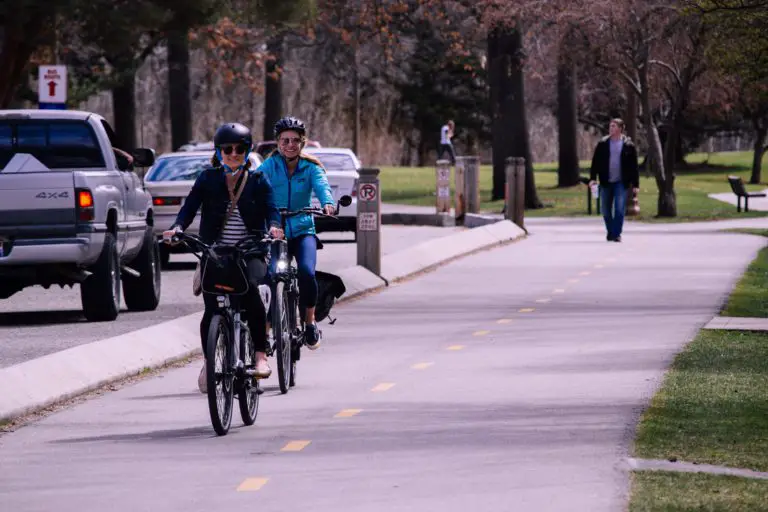
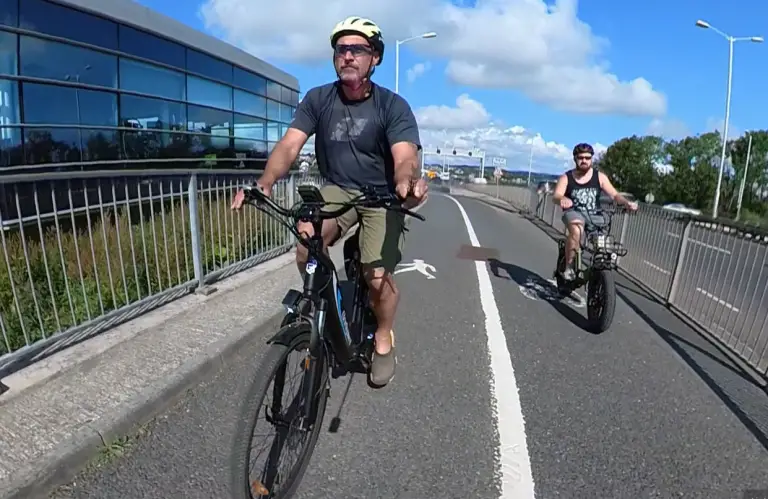
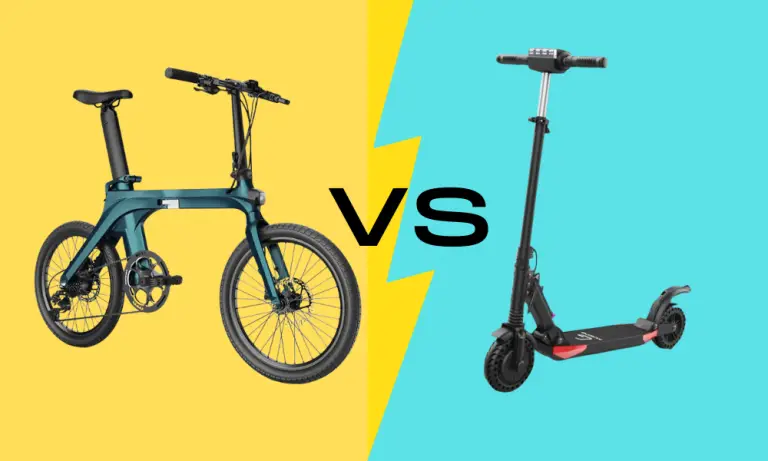
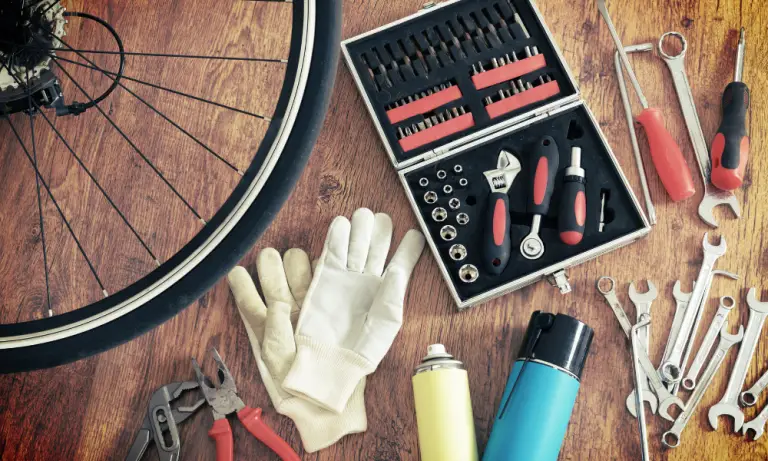
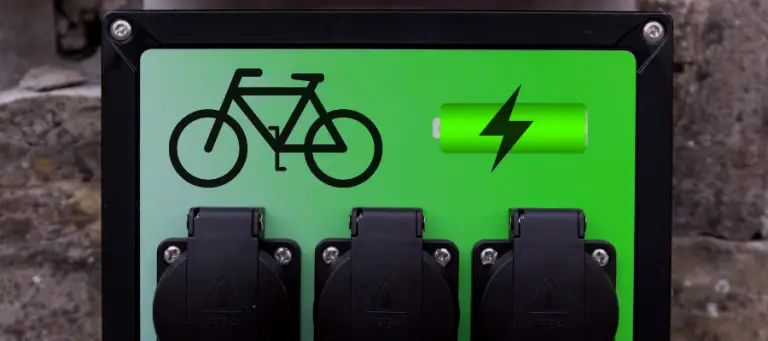
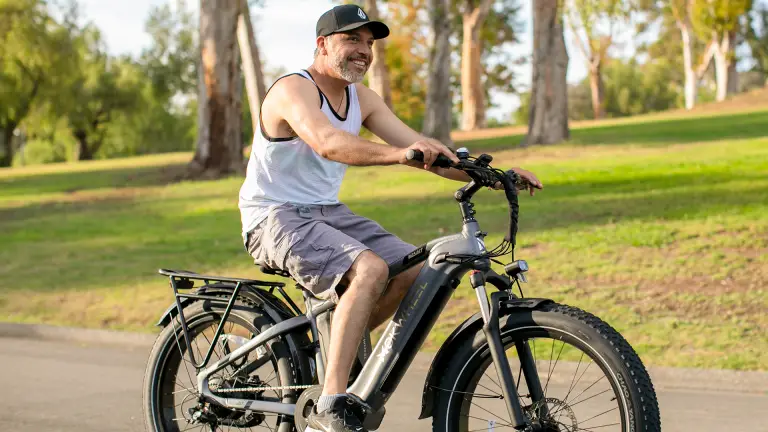
My husband and I are thinking about how to improve our physical health, and we are looking for advice. I loved that you mentioned riding an e-bike can help you to improve your mental well-being, and lower your blood pressure. I will let him know about your recommendations to understand the benefits of electric bikes to help us.
Hi Ellie,
Glad you found this article useful. Wishing you and your husband well and happy e-biking!
All the best,
Tony
What a great and inspiring story. I’m amazed at what you have achieved in such a short time. This website is a treasure trove of ebike information and I will be sharing it with a few friends. Thank you.
Hi Phil,
Thank you for your positive comments, much appreciated. glad you enjoyed the article!
All the best,
Tony
Yours is an inspiring story.
I was chatting with 2 elderly ladies in Downderry about their e bikes and how it has changed their lives and they mentioned you did one of their conversions, so I looked you up. I have a bike, but not used in 2years and now looking sad & bit rusty! Both tyres need changing, which made me wonder if it could be converted? You may laugh and thinks it’s ready for tip or it could be my saving grace, for my health and if not too costly. I’d be interested in any advice you could give me.
I’m in Saltash.
Hi Jane,
If you email me at cycletek@outlook.com I can send you my phone number. I’ve converted bikes that are over 30 years old before, so yours shouldn’t be a problem.
Regards,
Tony
Read your article with real interest Tony, thanks!
I don’t drive and bought a racing bike in 1982 for going to work on.
I used it a lot over the years, until about five years ago.
Cataracts ops, prostate cancer treatment, damage to my feet and Covid resulted in a more sedentary and solitary existence, to the point that I seemed to age ten years in the last five!
As planned, I finally acquired a Raleigh ebike less than three months ago, though at almost 76 years of age, I am not as nimble as I once was and some of the fear factor has crept in – all those potholes!
Undaunted, I peddle on, the big plan being to explore the Heart of Wales train-line towns, including North Wales, which I know of extensively, having explored the town’s and stops on the rail networks on foot.
I can now by-pass the problem of not being able to walk so far by using my ebike, which ‘takes the cycling out of cycling’ and who knows, I may one day be able to use my old Raleigh racer, parked up in the garage!
Regards – Ron D
Hi Ron,
Thanks for sharing, glad you’re back enjoying two wheels again. I plan on spending a few days cycling in mid-Wales hopefully next year. It’s one of the most beautiful parts of the UK in my opinion.
Here’s to many more miles and a decent summer!
Cheers,
Tony